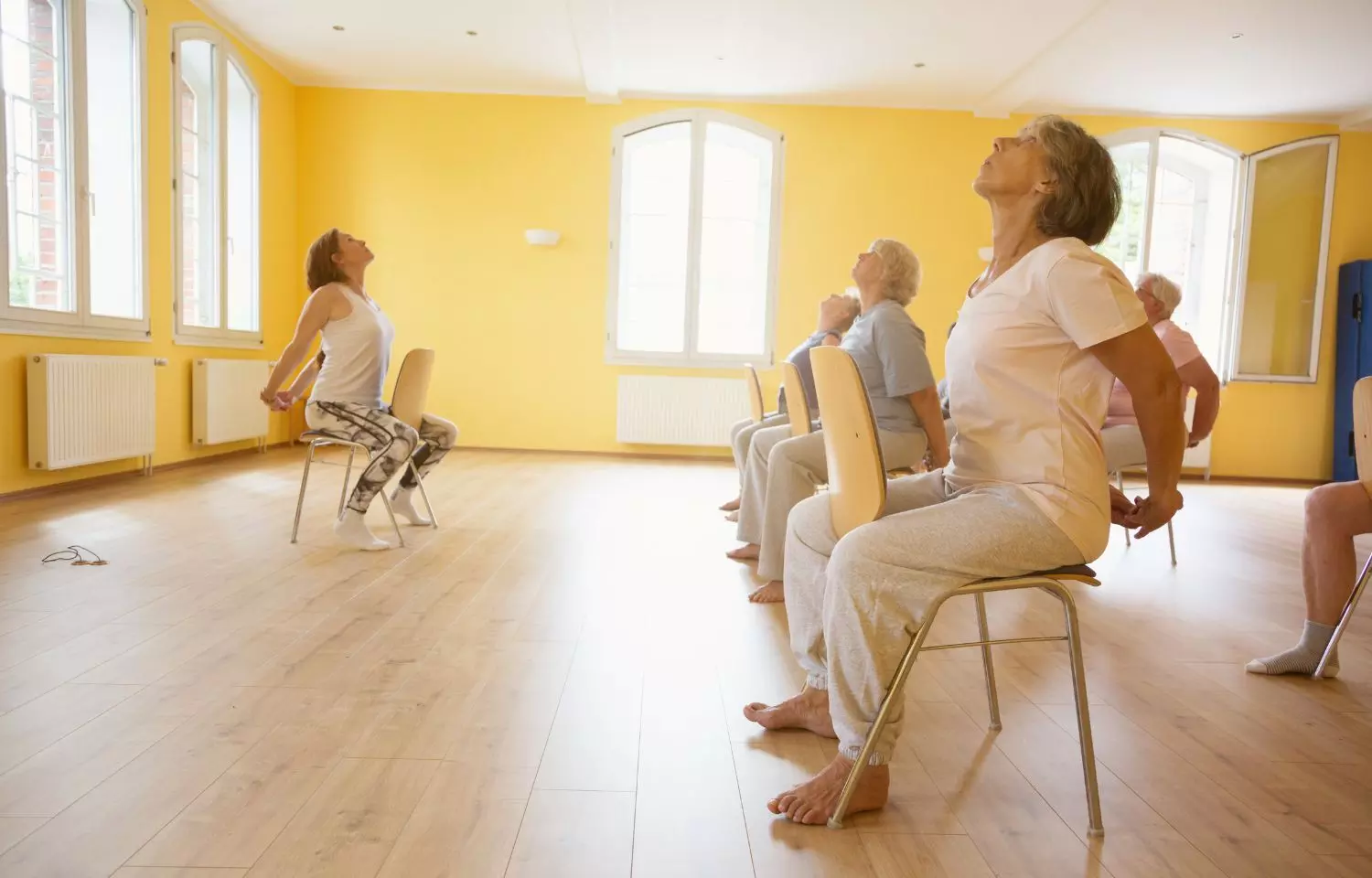Yoga Effective Alternative to Strength Training for Knee Osteoarthritis: JAMA

Researchers have found in a randomized clinical trial that patients with knee osteoarthritis (OA) experienced comparable benefits from yoga as from conventional strength training. The findings suggest that yoga is noninferior to strength training and may be considered a viable treatment option for managing knee OA. A recent trial from Southern Tasmania, Australia, showed that yoga was noninferior to conventional strengthening exercise for decreasing knee pain at 12 weeks in adults over 40 with knee OA. The study was conducted by Bedru J. and colleagues published in JAMA Network Open.
Knee osteoarthritis is a prevalent degenerative joint disease leading to pain, stiffness, and loss of mobility, particularly in elderly populations. Exercise is an integral part of OA treatment, yet there has been limited evidence for the relative effects of different exercise types, including yoga and strengthening, on patients with knee pain and functional recovery.
This parallel-arm, active-controlled, single-center randomized clinical trial enrolled 117 patients, 58 to yoga and 59 to strengthening. All patients had a baseline knee pain score of 40 or greater on a 100-mm visual analog scale (VAS), which is moderate to severe pain. The average age was 62.5 years (SD 8.3), and 72.6% were women.
The intervention lasted for 24 weeks, during which the participants went through 12 weeks of supervised yoga or strengthening exercise (two in-person sessions and one home session weekly), followed by another 12 weeks of unsupervised home sessions. The main outcome was the difference in knee pain during 12 weeks measured with the VAS. A prespecified non inferiority margin of 10 mm was used to assess whether yoga was not inferior to strengthening by a clinically significant amount. Secondary outcomes were WOMAC pain, function, and stiffness scores, patient global assessment, physical performance tests, depression (PHQ-9), neuropathic pain, and quality of life (AQoL-8D).
Results
-
The trial discovered that the 12-week difference in VAS knee pain between groups was similar.
-
The difference between pain decrease using yoga compared with strengthening was −1.1 mm (95% CI, −7.8 to 5.7 mm) and stayed within the prespecified margin of noninferiority, which demonstrated that yoga was no worse than strengthening exercises at lessening pain.
Significantly, 7 of 27 secondary outcomes that were measured at 12 and 24 weeks were in favor of yoga, statistically significant. The yoga group had superior improvement in:
-
WOMAC pain: −44.5 mm (95% CI, −70.7 to −18.3)
-
WOMAC function: −139 mm (95% CI, −228.3 to −49.7)
-
WOMAC stiffness: −17.6 mm (95% CI, −30.9 to −4.3)
-
Patient global assessment: −7.6 mm (95% CI, −15.1 to −0.2)
-
40-m fast walk test: +1.8 seconds (95% CI, 0.4 to 3.2)
-
Also, depression (PHQ-9) at 12 weeks was better in the yoga group with a between-group difference of −1.1 (95% CI, −1.9 to −0.2), and quality of life (AQoL-8D) at 24 weeks was better in the yoga group (difference of 0.04; 95% CI, 0.00 to 0.07). Mild adverse events were reported equally by both groups, and no serious adverse events were linked to the interventions.
This randomized clinical trial found that yoga was noninferior to strengthening exercises for decreasing knee pain in people with knee osteoarthritis. In addition, yoga also had modest but significant benefits in joint function, patient-reported outcomes, and mental well-being through 24 weeks. These results substantiate the role of yoga as an effective, holistic exercise approach in OA management programs.
Reference:
Abafita BJ, Singh A, Aitken D, et al. Yoga or Strengthening Exercise for Knee Osteoarthritis: A Randomized Clinical Trial. JAMA Netw Open. 2025;8(4):e253698. doi:10.1001/jamanetworkopen.2025.3698
